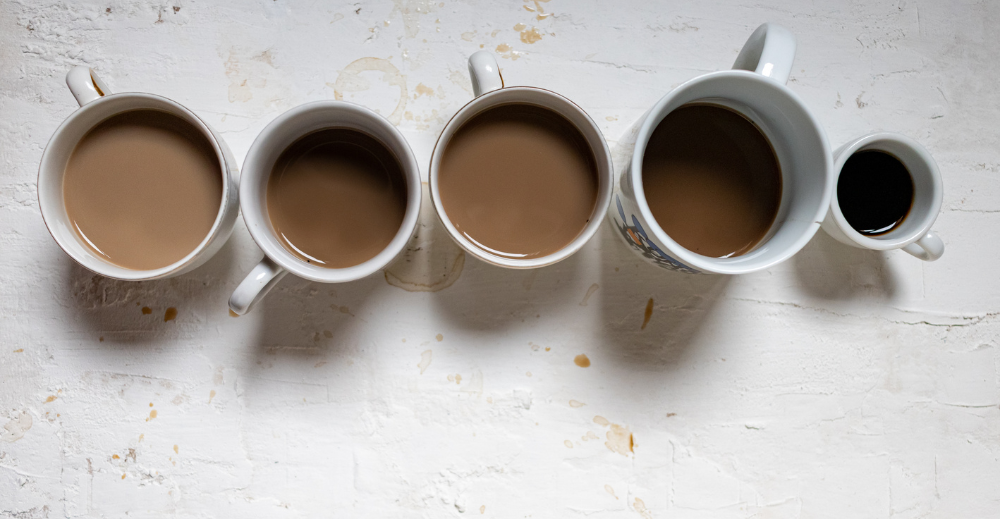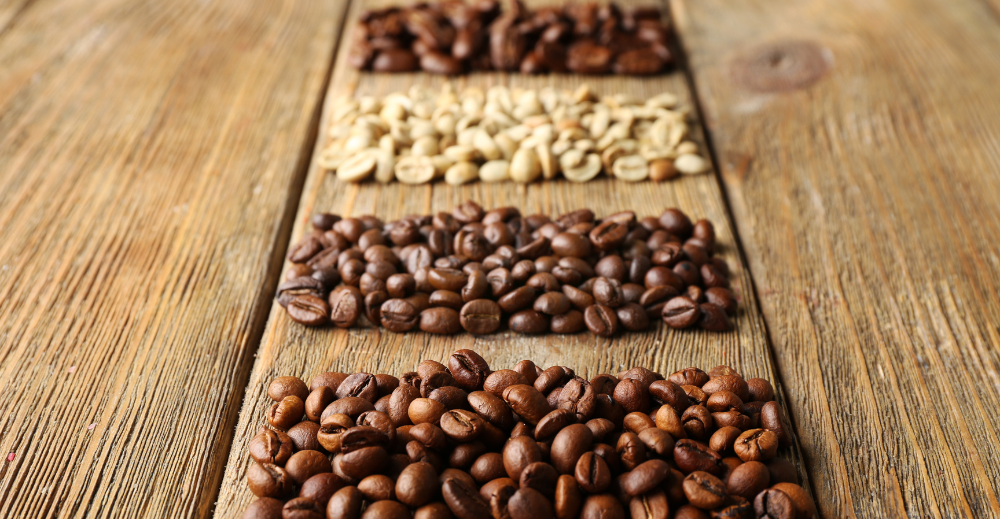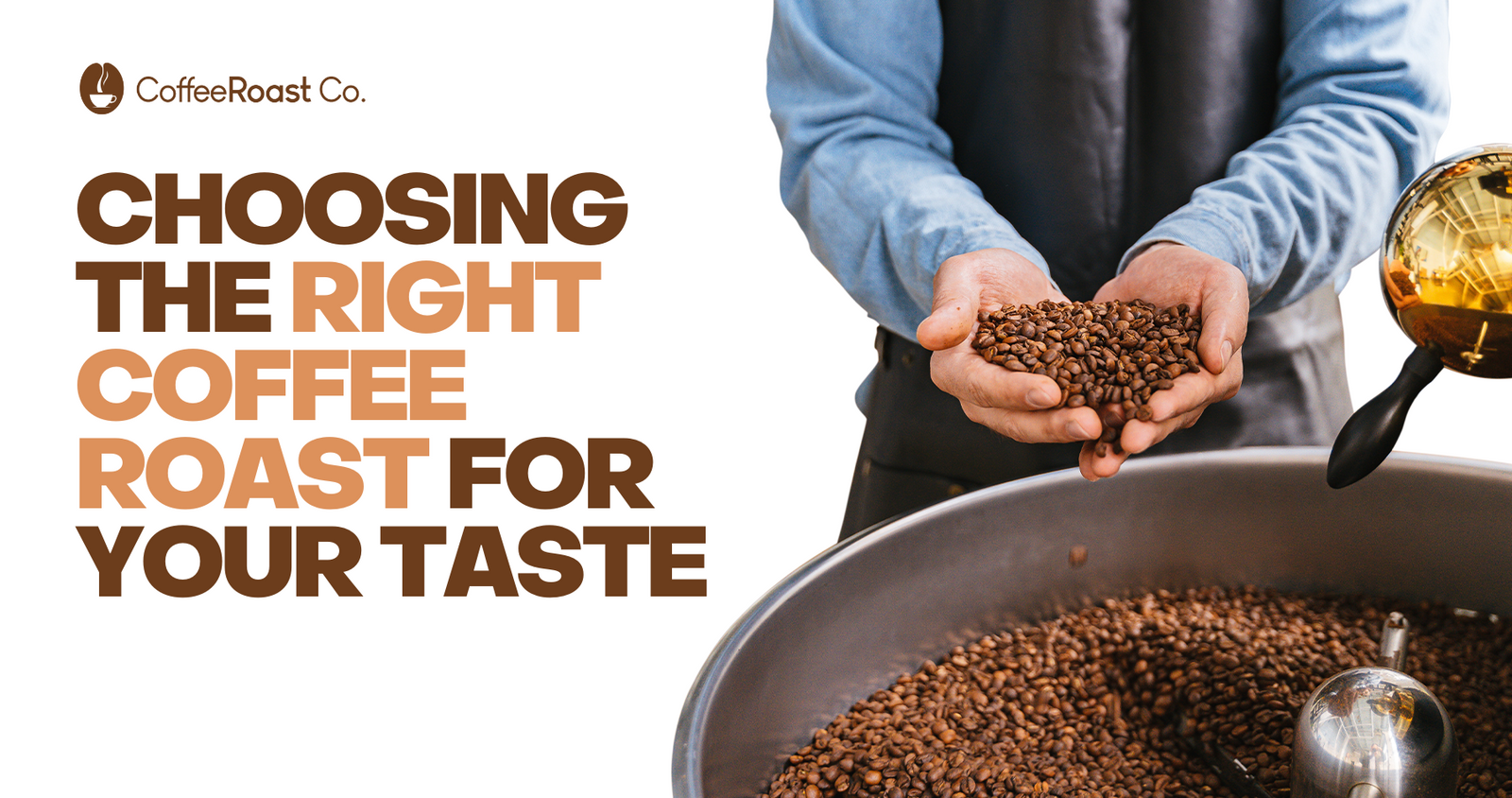Coffee is one of the most popular beverages in the world, and for a good reason. It provides a quick energy boost and has a rich and nuanced flavor that can vary based on the type of coffee beans and the various roasting process.

If you're a coffee lover, you may have noticed that different roasts can have various taste profiles. This is because the roasting process affects the coffee, from its acidity, balanced flavor, to its body and aroma.
When it comes to coffee, the taste is everything, but with so many roasts and flavor profiles available, it can be challenging to know where to start.
In this blog post, we'll look at the factors influencing coffee and give tips on choosing the best roast for you.
Understanding Different Roast Levels
Many roasters have unique names for the origin flavors of their roasts, such as French Roast, Italian Roast, or American Roast. Instead of roast styles, think of these origin flavors as marketing hype. Usually, roasts fall into three groups - light, medium, or dark.
Light Roasts
Light roast is defined by its light brown color, and is characterized by the absence of oil on the surface of the roasted beans.
Lighter roasts have high acidity levels, less caffeine, and a lower body, making them ideal for those who prefer a more delicate, tea-like flavor in their coffee.
The light roast beans are roasted for a shorter period at a lower temperature, preserving their original aroma.
Medium Roasts
The medium roast has a medium brown color and a more balanced profile. This roast has a lower acidity and a higher body than light roasted coffees.
The beans are heated for a longer period of time at a higher temperature. The roasting brings the natural sugars in the coffee bean into a caramelized form, which creates a richer profile.
Dark Roasts
Dark roast coffee has a rich, dark color and a bold, smoky profile. This roast level has low acidity and is full-bodied, making it ideal for those who prefer a strong flavor.
The dark roasted whole beans' shiny look results from the oily surface being released during the longest, highest temperature roasting process.
Identify Your Taste Preferences
Selecting the ideal roast requires an understanding of your personal taste preferences. Consider the following when choosing your preferred flavors:
The Four Basic Tastes
Sugar, acidity, bitterness, and salty are the four fundamental flavors. Sugars are linked to sweetness, which gives the tongue a pleasing sensation. Acidity is a harsh, sour ranging from modest to severe. The bitterness may be regarded as unpleasant or good, depending on the situation.
Your Preference for Sweetness, Acidity, Bitterness, and Body
Pay attention to the many flavors of your coffee as you sip. Do you prefer sweet, acidic, or bitter? Do you enjoy a full-bodied or a light roast coffee with a lighter mouthfeel? You can select the ideal roast by knowing your preferences for these tastes.
The Flavor Notes You Enjoy
Fruity, nutty, chocolaty, floral flavors, and other aroma elements can all be found in coffee.
The coffee beans' origin, processing technique, and roast level can all affect these flavors.
When drinking coffee, pay attention to the varied flavors that you appreciate. Do you prefer fruity or dark chocolate flavored? Or do you favor nutty or floral-flavored?
You can choose the appropriate roast that matches your preferences by being aware of your personal taste. For example, if you prefer a fruity and light body, a light dark roast coffee made from Ethiopian beans may be a good fit.
Alternatively, a medium dark-roast coffee made from Brazilian beans may be more suitable if you prefer a medium dark- roast with chocolate and a robust body.
Matching Your Taste Preferences with Coffee Roasts

To help you in selecting the ideal roast for your preferences, here are the different characteristics of light, medium roast, and dark roasts:
Characteristics of light roast
Light roast coffee typically has a lighter color than darker roasts. They are frequently categorized as fruity, flowery, or tea-like, and they have greater acidity and a lighter body than blonde roasts and darker roasts.
Light and medium roasts also are excellent choices for individuals who wish to appreciate the distinctive flavors of different coffees because they also often maintain more of the original flavor of the coffee beans.
Characteristics of medium roast
Compared to light roasts and dark roast coffees, medium roast is slightly dark brown in color and is more robust. With qualities that are frequently described as chocolaty, nutty, or caramel-like, they have a balanced acidity and texture.
For those choosing a coffee with a balanced flavor profile, that is neither overwhelming nor mild, medium roast coffees are a popular option.
Medium roasts tend to have a mellow body than both light and dark roasts, meaning the coffee has a heavier mouthfeel and is less thin. This medium roast level is also popular because it allows the bean's unique characteristics to shine through and provides a more developed and complex aroma than light roasts.
Characteristics of dark roast
Dark roasted coffees have a bold, intense, and often dark brown or chocolate brown in color appearance. They have a full body, low acidity, and qualities frequently characterized as smoky, earthy, or spicy.
Dark roasted coffee is an excellent option for individuals who enjoy coffee with a stronger aftertaste. They also tend to have a higher caffeine content than lighter roasts due to the longer roasting process and are often used to make espresso-based drinks because their strong aroma can stand up to adding milk or cream.
Tips for Finding the Right Coffee Roasts
-
Trying different coffee roasts
To find out which roast stand out, try a selection of light, medium, and dark roast coffees from different regions.
-
Experimenting with different brewing methods
Various brewing methods might also impact the taste of your coffee. For instance, each brewing method, including French roast, pour-over, and Italian roast, offers a unique profile that may appeal to different tastes. It's always a good idea to experiment with other brewing techniques to find the one that suits your tastes best.
-
Paying attention to the roast date
The flavor of your coffee might vary greatly depending on when it was roasted. Utilizing coffee beans within a few weeks after the roast date is recommended because they begin to lose the aroma soon after being roasted. Try to consume the beans within two to three weeks after the roast date provided by coffee roasters on their packaging.
-
Finding a reputable coffee roaster
Getting a cup of coffee that is of the highest caliber requires finding a reliable coffee roaster. For the best freshness, look for roasters who utilize high-quality, ethically sourced beans and who roast in small quantities. To help in your decision-making, you might also want to search for coffee roasters who offer details on the profiles of their various roasts.
Which Coffee Roasts Should I Choose?

Getting the ideal brown in color cup of coffee requires careful consideration of the roast. Knowing where to begin might be challenging, given the variety of available roast levels.
Always have an open mind and try different things. You might be pleasantly surprised by what you learn and discover a new favorite perfectly roasted coffee.
Brewing coffee and roasting techniques can significantly affect the taste, but at the end of the day, it all boils down to personal preference.
Your preferred roast level, brewing method, and even the coffee's origin can be unique to your taste buds. In any case, there's no correct solution. The coffee you enjoy the most is the one that is best for you.
So try different roasts, and experiment until you find your perfect cup of coffee. Enjoy the journey of discovering new flavors and aromas in the world of coffee!





Leave a comment